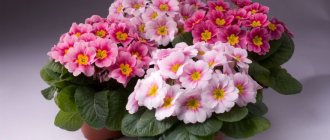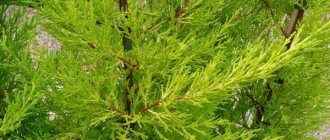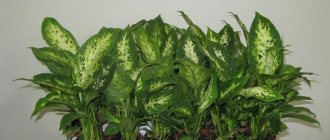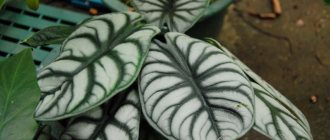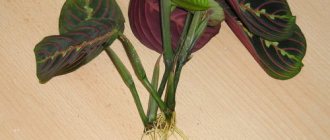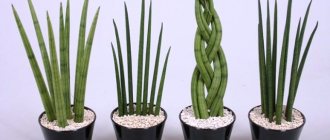- August 12, 2019
- Houseplants
- Daniil Belousov
Aloe is an ornamental plant that is distinguished by very fleshy and thick leaves. It is widespread in African countries. However, everyone knows it under the name agave, since it grows in almost every home. Many people are familiar with the amazing healing properties of this plant. But like any other, it needs proper nutrition, lighting and watering. Therefore, let's look at the features of aloe vera. How to care for this unique plant at home?
Lighting
It is immediately worth noting that this plant is very demanding of light. Therefore, it is best to place it on the sunny side. This is especially true for the cold season. During this period, you need to periodically move the aloe to the most illuminated points of the apartment. If there is not enough sunlight in the room, then in this case the plant will have to be illuminated using artificial lighting.
During the hot season, it is recommended to place aloe on the balcony, or even directly outside. In this case, the plant will happily enjoy direct sunlight. This is one of those plants that is not afraid of sunlight. Since its leaves are filled with a jelly-like mass, the sun’s rays cannot damage the hard peel.
Folk signs about Aloe
Yes, among other things, some signs are associated with aloe. Believing in them or not is a purely personal matter, nevertheless, here they are:
- One ancient sign says that if your aloe blooms, then an angel has settled in your house;
- Aloe protects the house and residents from the evil eye, damage and negative energy;
- If you hang a dried leaf of a plant over the door to your house, then bad and unwanted “guests” will no longer bother you;
- Another sign says that aloe gives its owners health and longevity;
- The plant helps to find a soul mate and start a family. To do this, you need to cut 13 aloe leaves. Hide them and dry them for 12 days. On the 13th day, the dry leaves were burned and the ashes were scattered in front of the house threshold. It was imperative to apologize to aloe for the pain caused;
- Protective amulets are made from dry roots by placing them in small bags. According to the sign, such amulets protect the owner from illness, negativity and bad wishes.
Watering
If we talk about how to care for aloe, the description in any specialized literature will contain information that you do not need to “water” this amazing plant abundantly and often. Moreover, it is better not to water the aloe once again than to add too much moisture to the soil.
In the cold season, the flower is moistened as needed when the soil dries out. Moreover, for watering it is recommended to use dispersive sprinklers. When the warm season begins, aloe is watered every day. However, the procedure is performed exclusively through the pallet. That is, water is not poured directly to the roots, but only into the pot stand. It is also worth paying attention to the fact that it is recommended to first pour water into the tray and then wait 20-30 minutes. If there is anything left in it, the liquid is drained. In this case, you can avoid the fact that the soil will take more moisture than it needs.
Special aloe vera flower
What is unique and useful about the aloe succulent? Caring for a growing plant at home allows you to always have an assistant in the fight against germs, fungi and bacteria.
Aloe vera has an antibacterial and disinfectant effect. You just need to apply the gel to your palms and rub. Germs and dirt will be destroyed by the plant sap.
You can use aloe vera succulent as an effective vegetable and fruit wash, it is a true natural product without chemicals.
Aloe vera flower is rightfully considered a natural analgesic and the first aid for skin damage.
Content temperature
How to care for aloe? If we talk about temperature conditions, it is best to install the flower on a window on the south or east side. In this case, the plant will not be able to freeze and at the same time receive the greatest amount of light. When it gets cold, be sure to place the pot on the warmest window. Care must be taken to ensure that the temperature does not drop too low. Otherwise, the aloe will stop blooming and developing. Since this plant originated in Africa, this means that it is dependent on sunlight, and therefore on heat. Nevertheless, home room temperature is quite enough for this flower.
If we talk about the minimum permissible temperature in the room, then for aloe in a pot it is +15 degrees. It is undesirable for it to go lower. If the plant begins to freeze, the foliage will become more lethargic and lifeless.
If it is a cold winter, then in this case it is recommended first of all to insulate the windows on which the flowers are located, and also to ensure that there are no drafts. You can put a sheet of polystyrene foam or other warm material on the windowsill, which will create an elevation and prevent the pot from coming into contact with the cold window sill. This will prevent hypothermia through the so-called bottom ball of soil. If the plant gets too cold, the roots may begin to rot. It is very difficult for an agave to recover from this.
Choosing a place for a plant
Aloe will quite like a place reminiscent of his native Africa. Therefore, the plant is welcomed by owners of sunny windowsills where other flowers burn. In this case, direct rays will not be harmful: use them safely, and in winter you can use additional lamps.
Room temperature is optimal for aloe. In general, aloe rarely “complains” about temperature and humidity when in an apartment, for which it has been deservedly recognized as an unpretentious indoor plant.
- In the summer, the pot can be taken out into the open air, but protected from heavy rainfall.
- In winter, it would be good to send aloe to rest: the plant’s dormant period requires a cool place (about 14 degrees). Then the bush will not stretch out in a vain search for the winter sun.
What kind of soil is needed
Aloe requires careful care in this regard. This also includes preparing the right soil. In this case, most experts recommend giving preference to slightly acidic soil compositions. This ideal soil for aloe consists of turf and leaf soil, humus and coarse river sand. Also, do not forget about drainage. In this case, you can use ordinary broken stones. And if a transplant is carried out, then before this procedure it is necessary to clean the aloe roots from the old soil and treat them with charcoal.
Possible problems during landing and immediately after it
Often, planting and propagation of aloe occurs without any difficulties. But sometimes gardeners complain that this succulent does not take root. Therefore, you should find out why this happens.
The most common cause of plant death is excessive soil moisture, which is associated with improper watering. To correct the situation, you need to remove the plant from the pot and clean out the rotten areas and roots with a knife. After this, sprinkle the fresh wounds with charcoal and dry for several days in a dark place.
Then plant in a substrate consisting of sand and turf in equal proportions. The plant should not be watered for the next 2 weeks. If during this time the rotting process does not resume, then the soil in the pot can be slightly moistened. As soon as the plant fully strengthens and begins to grow, it needs to be transplanted into a full-fledged substrate.
Mealybug is a dangerous pest of succulents
Another reason why aloe does not take root may be mealybugs. This pest lays eggs in the roots of the plant. As a result, the emerging larvae feed on the sap of the plant, which prevents rooting. In this case, it is recommended to water the plant with a solution of the drug Aktar (1.4 g per 6 l). After a week, spray the plant and soil in the pot with phytoverm.
Note! Treatments should be carried out until the pest is completely destroyed, alternating medications.
What to do if it doesn’t take root
If, despite all the efforts expended, aloe still cannot fully take root, you need to check whether all recommendations are followed. When planting and growing, everything matters, so even the smallest details should not be ignored.
Most often, the plant cannot fully take root, since the temperature regime during the rooting period is not observed. In this case, it is recommended to repeat the planting, replacing the entire soil. You should also wash the pot well and scald it with boiling water.
Growing aloe, like other succulents, is not difficult; the main thing is to provide the plant with conditions that are as close as possible to its requirements. First of all, this concerns planting, since future development depends on this. Otherwise, even an inexperienced gardener can cope with caring for aloe.
Aloe: how to care and replant?
If we talk about the dimensions of the pot for replanting, they are determined based on the size of the root part of the plant. Therefore, before performing any transplantation manipulations, it is necessary to determine the width and length of the root system. The pot is selected in such a way that the roots can fit freely in the container. It should be taken into account that the agave develops quite quickly, and accordingly, the root system begins to grow. But this does not mean that you need to immediately plant the plant in a huge pot. It is best to perform the transplant procedure more often. Then the aloe will feel better, and the soil will not oxidize.
How to land
After drying the cut, cuttings or leaves are planted in previously prepared soil. They do it like this:
- The leaf is placed in moist soil with the tip down to a depth of three centimeters.
- Cover the cutting or leaf with a glass jar or film.
- Place the container with the seedling in a bright place.
- When planting shoots, choose one that already has up to six leaves. Bury in the ground up to the beginning of the bottom sheet. To give the sprout strength, it is surrounded with small stones. Further cultivation is also carried out in a greenhouse, with proper care of the plant.
- The “babies” are transplanted with roots. If the roots were damaged during the separation of the shoot, they are dried for several days before planting in the ground. Undamaged individuals are planted immediately.
Top dressing
When considering how to care for aloe, you should not miss this important stage. Like any other plant that is in the room, the agave also needs to be fed periodically. It is important to consider that only healthy plants are fertilized. If aloe is sick, then first of all it needs to be cured. After replanting a damaged flower, it is recommended to fertilize it no earlier than after 3 months.
It is also worth paying attention to the fact that any fertilizers are applied only after watering. It is recommended to feed the plant exactly when it is actively growing. In order to decide how to care for aloe, the description of the plant should be studied in detail and the optimal feeding for the agave should be selected. For example, experienced flower growers recommend the preparations “Power of Life”, “Agricola” and “Bona Forte”.
It is also recommended to apply fertilizers through a tray. In this case, you can protect the plant from the possible aggressive effects of some components.
Description of plant crop
Aloe, or agave, belongs to the genus of succulents of the Asphodel family. The flower is native to South Africa. In modern natural conditions, the culture grows in Ethiopia, Somalia, South-West Africa, South Africa, the United States of America, Asia, the Mediterranean, New Guinea and Europe. The plant can also be found on the Arabian Peninsula and the island of Madagascar. Aloe grows in hot climates. Mountain deserts, savannas and coastal semi-desert areas are good for it.
The plant culture is a perennial herbaceous or tree-like plant, reaching a height of 10-15 m. The trunk diameter can be 2 m. Tree-like specimens have a thick reddish trunk, on which there are traces of dead foliage of the lower part of the succulent.
The juicy and fleshy leaves of the agave, 2 cm thick, grow up to 60 cm in length and up to 4 cm in width. They are convex at the bottom and concave at the top. There are sharp thorns along the edges of the leaf plates. The shape of the leaves can be lanceolate, oblong-lanceolate, xiphoid or deltoid. They are greenish-gray or dark green in color with a waxy coating. Leaves may also be characterized by dark and light spots or yellow streaks.
The flowers of the plant are collected in racemes or paniculate inflorescences of yellow, orange, coral or white color. Perianths are simple, tubular; they are formed from six linear petals arranged at the base in two circles, like the six stamens.
Under favorable conditions, agave can bloom and bear fruit every year or every other year.
Root pruning
This procedure is usually performed during the process of transplanting or planting a fairly mature aloe. In this case, the roots of the plant are pruned. This manipulation is performed to ensure that the plant grows at a faster rate in the new soil. Foliage pruning is also carried out. Thanks to such manipulations, it is possible to control how widely aloe will grow. For example, if you want the flower to grow upward or not rest against the walls of the pot, then in this case the leaves and shoots located on the sides are removed.
Aloe at home: what to do after purchase?
It is necessary to ensure careful transportation . This is necessary in order not to damage the aloe leaves, which contain all its healing power.
At home, the new plant must withstand quarantine . It is advisable to keep it separate from other flowers for a week. During this time, it is better not to water the aloe. If the soil in the pot is too dry, watering once is possible.
A week after purchase, the plant should be replanted. You will need good, breathable soil for succulents and a new pot. The distance between the aloe roots and the walls of the pot should be about 1.5 cm . The plant does not need feeding for the first 3-4 months after transplantation.
Reproduction
This is another important step in how to care for indoor aloe. As a rule, such procedures are performed simultaneously with plant transplantation. The easiest way to get a new flower is from an aloe leaf. To do this, during the replanting process, you need to cut off several mature leaves, on which fairly hard thorns have already formed. After this, they are left for some time to dry. At the next stage, the leaf plates are planted directly into the ground. The land also needs to be prepared.
In this case, it is necessary to mix leaf soil, sand and slightly moisten the soil. After this, the future sprout in the pot should be placed in a fairly bright place, where the temperature is 15-18 degrees Celsius. It is worth being patient, as the first root of a young seedling does not appear quickly. This does not mean that you need to start being diligent and watering the plant every day. This is completely normal, so just wait a little longer.
If you take good care of such a young plant, feed it and monitor its health, then within three to four years flowers will begin to appear on it. Aloe vera (how to care for it is described in the article) is really capable of blooming. Few people know about this. However, aloe pampers with its beautiful inflorescences only those gardeners who are the luckiest.
Features of aloe
The leaf blades of aloe that are part of the rosette grow from the root, most often they are fleshy. There are species that have thorns on their foliage, and there are also those that do not. Some species have a waxy coating on the surface of the foliage. During flowering, the bush is decorated with flowers of red, yellow or orange color. The shape of the inflorescence, depending on the species, can be racemose or paniculate; most often the flowers are bell-shaped or tubular.
Some species have healing properties, so they are used in alternative medicine. Aloe juice helps to quickly cure ulcers and burns. It is also used to make masks because it has restorative and rejuvenating properties. The foliage is used to obtain a substance with a laxative effect. Not only many types of aloe are grown in culture, but also varieties.
Humidity
If we talk about caring for aloe, then you should pay attention to this important indicator. It must be taken into account that overly moist soil is not suitable for agave. At the same time, the air in the room should not be very dry. Therefore, if it is not possible to install a pot of aloe in the room in which the air is humidified, then at least once a week it is necessary to spray the plant trunk with water using a sprayer. It is also recommended to humidify the space next to it.
What does the agave like?
Some gardeners stimulate Aloe to bloom. To do this, it is necessary to create ideal conditions, namely:
- The air temperature should be maintained around 14°C. Because the plant, under extreme conditions, tries to reproduce by starting to bloom;
- the air must be dry so that the roots do not begin to rot;
- For watering, only a tray is used, into which water is added for 10 minutes and then drained.
Reference. Aloe blooms for six months. For more abundant flowering, you need to add minerals twice a month. In this case, the soil must be pre-moistened.
Diseases and pests
Very often, gardeners grow several types of aloe together under similar conditions. This mixture of seeds for growing together is called aloe mix. Home care is not much different between species when it comes to insects and diseases. They suffer equally from pests, just like any other plants.
Even despite its vitality, aloe can develop root rot. To exclude the possibility of this disease, you need to carefully examine the plant. If it has at least a few leaves that are much darker and look limp, then in this case you need to remove the agave from the pot as quickly as possible and inspect the roots. It is quite possible that they have begun to rot. This can happen if you water the plant too often or too much. After assessing the root system, you need to cut off all damaged roots and transfer it to new soil. If no healthy roots are found at all, then in this case you need to remove all the diseased roots and re-root.
When considering how to care for aloe, you should be prepared for the fact that the plant may suffer from dry rot. In this case, we are talking about drying out of the root system. The same will be visible on the leaves. As a rule, in such situations it is almost impossible to save aloe, since this unpleasant condition progresses too quickly.
Aloe can also harbor scale insects. This is a fairly common pest that likes to settle on the back of leaves. If you lift the leaf, small wax shields no more than 2 mm long will be visible on it. The worst thing is that these pests form large colonies that are located on plant stems. You can also pay attention to the leaves. If red-brown spots appear on them, this indicates that the damaged areas will soon die. It is noteworthy that it is very difficult to get rid of this pest if it proliferates greatly. Therefore, it is worth periodically inspecting plants for the presence of such insects. If you suspect this pest, it is recommended to wipe the plant daily with a cotton cloth soaked in vinegar. Chemical insecticidal preparations for scale insects - “Fitoverm” and “Aktara”.
What types of aloe are there: photos, names and descriptions of indoor varieties and medicinal varieties
The name aloe - aloe in Latin - probably comes from the Greek language, formed from the fusion of words meaning "giving" and "salt", indicating a bitter-salty taste. Transformed into Latin, it became aloë, “bitter.” It is quite possible that the original origin of the word is from the Arabic alloeh: “a substance that is bitter and bright.” A similar-sounding name, Ahal, appears in the Bible, suggesting linguistic roots in Hebrew.
The genus of aloe belongs to the Liliaceae family , according to the rules of traditional taxonomy, having previously been separated into the family of the same name. With the advent of the APG classification system, the plant began to be classified as Asphodelaceae. The genera Gasteria, Haworthia and Kniphophia have the same method of growth and are its closest relatives.
The succulent is often confused with a cactus, which is not surprising if you remember where its homeland is: Africa, Madagascar, the Arabian Peninsula. Various species of aloe are so widely cultivated throughout the world that it is impossible to identify its natural distribution area.
Aloe is a valuable plant. Its raw materials are rich in polysaccharides, allantoin, flavonoids, prostaglandins, phenol compounds, essential oils, choline, thiamine, cyanocobalamin, carotenes, ascorbic acid, potassium, zinc, copper, magnesium and other useful substances that determine its medicinal properties.
The Plant List, a joint development of Kew, the Royal Botanic Gardens in the UK, and the Missouri Botanic Garden, lists 558 aloe species, all of which are named in the project's lists.
The photo shows the types of aloe whose names are most widely known:
However, few plant species have medicinal properties. Only varieties of aloe derived from the species described below are classified as medicinal.
Aloe vera, which is real, rightfully takes first place. Used in gastroenterology for the treatment of gastritis, enterocolitis, gastric and duodenal ulcers; ophthalmology for complex therapy of keratitis, blepharitis, conjunctivitis, in cases of vitreous opacification; therapeutic cosmetology for sensitive and problematic skin; in folk medicine as an anti-inflammatory agent for mucous membranes and wound healing.
It grows in the southern half of the Arabian Peninsula, in Morocco, Mauritania, Egypt, the Canary Islands, Cape Verde, and the island of Madeira.
Its varieties, depending on their origin, differ in the color of the leaves (they can be blue or green). In addition, Aloe chinensis , the leaves of which are covered with white round spots.
Aloe arborescens , known as agave, was well studied in the mid-twentieth century. Its leaves and condensed juice (so-called sabur) are used to make laxatives, choleretic, anti-burn agents; they improve appetite and the secretion of the digestive glands.
Distributed in South Africa: Mozambique, Zimbabwe, Malawi, Swaziland.
Its subspecies known as Aloe arborescens var. natalensis has been tested in vitro since the 1980s, showing fungicidal activity and the ability to inhibit the growth of staphylococcus, streptococcus, diphtheria and dysentery bacilli.
These types of aloe have largely displaced its Socotrin variety, which came from the island of the same name in Yemen, but it has not lost its local significance.
The plant in the photo is an indoor variety of aloe flower:
Of course, no matter what types of aloe there are, they all have something in common in appearance. This is a typical succulent plant with thick, elongated leaves, most often arranged in the form of a rosette. Succulents are species that have special tissues to retain the moisture they need to survive in dry and hot climates. In extreme conditions, the plant will simply close the pores on the leaves so as not to lose a single drop of precious liquid.
The flowers of different types of aloe can be yellow, white, red or orange, but will always be tubular, located on a long peduncle. Alexander Kuprin, in one of his works, gives a very vivid description of the aloe flower: “Lush clusters of snow-white flowers of unprecedented beauty bloomed on the high green stem of the Agave, which emitted a wonderful, indescribable aroma that immediately filled the entire greenhouse.”
In all types of aloe, only mature plants bloom, and, in combination with developed leaves, which Vasily Botkin compared to protruding daggers, the spectacle is enchanting.
But not all types of aloe plant look the same. The appearance of the flower, the color and arrangement of the leaves are the diagnostic features that make it possible to distinguish different types of aloe and distinguish individual varieties from them.
For example, Aloe variegata (tiger aloe) has light transverse stripes “painted” on the leaves, and the leaves themselves are arranged one above the other in a tight spiral, but in the descuana variety the shades of the spots are bluish, and in the pearl variety they look like light growths.
The already mentioned agave is more reminiscent of a tree, for which it received its second name, the soapy one has leaves covered with a mosaic of pale spots, the ferox has a reddish tint, and the variegated one looks like exotic emerald marble.
Here are photos and names of indoor aloe species:
True, variegated and tree-like aloe vera take root best as a houseplant: they are the easiest to care for.
For decorative purposes, breeders develop hybrid varieties of aloe. The most popular of them:
Black Gem is a rosette plant of miniature plants that changes its leaves from bright green to red when exposed to sunlight for long periods of time.
Donnie - has variegated dark green foliage with pink edges.
Snow flake - leaves are almost completely white, with green shading.
Blue elf - derived from aloe squat, with blue-gray leaves and orange flowers.
Pink blush - distinguished by reddish-pink edging and shading on the leaves.
Christmas Carol - known for its bright red thorns on green leaves.
The presented photos show aloe varieties in all their diversity:
Other pests
Even with good care, aloe at home can suffer from mealybugs. This is one of the largest and most visible pests. As a rule, it is removed from the plant mechanically. To do this, just use a brush and tweezers. After removing all the scale insects, it is necessary to treat the affected areas of the plant with garlic broth (half a liter of water is brought to a boil, 4-5 cloves of garlic are added, and left to cool). During this period, it is recommended not to expose the plant to direct sunlight. It's better to move it to the shade. In the most severe situations, an insecticide can be used.
Aloe can also be periodically attacked by spider mites. These are very small pests that are almost impossible to notice. They do not like cold water, so in the summer you can spray the agave with a very cold solution of soapy water or tobacco. Spider mites simply cannot tolerate these components. Garlic broth also shows high effectiveness. If all else fails, you can use chemicals.
Description of aloe vera flower
A bush with a short stem - this is what a flower looks like in nature. Its root system is poorly developed. The leaves are directed upward and have a fleshy structure, with thorns along the edges, and are able to retain moisture for a long time. The leaf width reaches approximately 15 centimeters, and the leaf length ranges from 60 to 100 centimeters. The leaf color is bright and rich. The color of the leaf can have two options: green and blue-green.
15 plant species are medicinal. Among them, aloe vera is considered especially popular.
Aloe vera has several names, namely: aloe Barbados, also known as real aloe. Barbados is the birthplace of this most valuable flower. As a houseplant, aloe vera is grown much less frequently than the tree plant.
The most valuable component is the unique aloe vera juice. No less useful is the gel-like mass that is located inside the sheet. In cosmetology, pulp and juice are widely used. Gels, scrubs, and masks are prepared from it.
The most studied succulent turned out to be aloe vera; its medicinal properties and uses have been known for a very long time and have been thoroughly studied. It is actively used in folk medicine, pharmacology, perfumery, and cosmetology. This flower is considered the most unpretentious indoor plant.
You just need to know how to grow aloe vera at home and organize proper care for the plant.
Important! You need to know that when growing a flower for medicinal purposes or cosmetic procedures, you should not use complex mineral fertilizers.
It is necessary to grow aloe vera in well-lit rooms, periodically turning the succulent on different sides towards daylight to avoid bending of the stem.
Preparing for landing
Let's consider the main ways to prepare the selected material for planting. Before sowing, aloe seeds are treated with potassium permanganate to disinfect them. To prepare the solution, use 0.5 liters of pure water and potassium permanganate on the tip of a knife, stir the mixture thoroughly until it acquires a light pink tint. Soaking lasts 20 minutes, then the seeds are washed under running water and dried.
When using different parts of a flower for planting, they are pre-treated for better rooting:
- When growing aloe from a cutting, it is cut into pieces 10 cm in length and all sections are sprinkled with crushed charcoal. The treated parts are left on a napkin at room temperature for several days so that they dry well;
- when cutting the top from an old plant, they retain a length of 12 cm . The cut is treated with charcoal and left to dry for a couple of days, the same as in the case of cuttings;
- Growing aloe from leaves also requires preliminary preparation of planting material. A young aloe leaf is used as a suitable material for planting; its length should be at least 8 cm. It is cut off at the base and treated with crushed coal. Leave the leaf in a warm place so that a thick film can form on the cut - this process can take from 2 days to several weeks.
Did you know? The healing properties of aloe appear only in the 5th year of the plant’s life.
Optimal growing conditions
Aloe, like any other indoor plant, requires special conditions for normal growth and development.
First of all, you should choose a suitable place to install a flower pot, guided by the following recommendations:
- Aloe is a light-loving plant; when placed in full shade, it can lose its decorative effect: its stems become very elongated. That is why it is better to install the pot on a western or eastern window. You can place the pot on a south-facing window, but be sure to shade it from direct sunlight to avoid brown burns.
- The air temperature in the room in summer should be at +18...+25°C, and in winter, so that the plant does not suffer from the cold - not lower than +14°C.
- The air humidity in the room is not particularly important for aloe; it can be anything, but it is worth noting that artificially increasing the humidity by spraying the leaves with a spray bottle can cause them to rot.
Selection of capacity
Aloe can be grown in plastic or heavy ceramic pots. They must have a sufficient number of holes at the bottom so that excess liquid freely leaves the pot, and the root system does not suffer from excess moisture. The size of the container is usually chosen in accordance with the size of the plant that is being planted.
Important! Clay dishes are usually not used for growing aloe, as they tend to evaporate moisture through the walls.
The pot should be low, but wide enough. For small plants that are planted without a root system, in the hope that they will soon take root, a pot of 8 cm in diameter is suitable. When the aloe has taken root well, after 1 year, it is transplanted into a pot of larger diameter, choosing the size in accordance with the volume of the root system, usually leaving 3 cm of free space on the sides.
Soil preparation
You can plant aloe in purchased soil (for succulent plants) or make it yourself by mixing different components: washed river sand, clay and humus. All ingredients are taken in equal parts, mixed thoroughly and disinfected in a double boiler for 2 hours. Thanks to this treatment, all harmful microorganisms and fungal spores can be destroyed. The resulting soil retains sufficient looseness and breathability.
Important! After steam treatment, the soil mixture should stand for a while, at least a week, so that a sufficient number of beneficial microorganisms that affect the normal functioning of the plant root system are restored.
Method for planting aloe at home
A particularly popular method of planting aloe at home is propagation by shoots (sprouts) without roots, which allows you to get a large number of new flowers from one plant.
From a sheet
When the cut aloe leaf has dried well, you can start planting:
- A little expanded clay is poured into the selected container (which has holes at the bottom) and filled with earth mixture.
- Aloe leaf is dipped in Kornevin to stimulate root formation.
- A small depression is made in the soil and the prepared leaf is placed vertically, cut down, so that it sinks into the hole by at least 5 cm.
- Fill the hole with soil, lightly compacting it to secure the planting material.
- Lightly moisten the soil surface with warm water from a spray bottle.
- Cover the container with a transparent jar to create a greenhouse effect and quick rooting.
Cuttings
After the cuttings have dried, they can be planted:
- Clean, damp river sand is poured into a long container.
- Make small depressions (2 cm deep) in the sand, maintaining a distance of 5 cm between them.
- Cuttings are placed in the prepared holes, dipping the lower part in “Kornevin”, and covered with sand, lightly tamping to fix the planting material in a vertical position.
- The sand is kept moist until the plant takes root.
- After the first roots begin to grow, after waiting 1 week for them to become slightly stronger, each cutting is transplanted into a separate container with a substrate for succulents. Expanded clay and soil are poured into the bottom of 7 cm (diameter) pots and cuttings with roots are planted.
Video: planting aloe cuttings
Tops
Let's look at how to plant the top correctly:
- Wet river sand is poured into a small container.
- Make a hole in the sand, 5 cm deep.
- The lower part of the planting material is dipped in Kornevin and placed in the hole.
- Fill the hole with sand, lightly tamping it down to fix the top.
- Since the flowability of sand can disrupt the stability of the plant, it is recommended to fix the top with a peg, which is buried as much as possible in the sand.
- When the plant takes root, it is necessary to transplant it into a substrate, as is the case with cuttings.
Find out what aloe soil you can use at home and how to make your own soil mixture.
Seeds
To grow aloe from seeds you need:
- Prepare the soil mixture for sowing: mix 1 part leaf soil, 1 part turf soil and 0.5 parts sand.
- Pour the prepared soil into a long rectangular container and make shallow (1 cm) furrows.
- Seeds treated with potassium permanganate should be sown at a distance of 3-4 cm from each other.
- Soil is poured over the seeds so that all the seed material is covered with soil.
- It is recommended to cover the container with plastic film to create optimal conditions for seed germination.
- Every day the film should be removed for 1 hour, and when the seeds germinate, remove it completely.
- When the seedlings have grown sufficiently and are 5 cm in height, it is time to plant them in separate containers with a diameter of 6 cm, leaving the soil composition the same.
- Expanded clay is placed at the bottom of the pots, the soil mixture is poured and each plant is planted in the center of the pot, then watered.

